Tuning the Ear Damping
The model of the ear does not have mechanical properties prescribed and as such is just a solid shape filling the voice in the headphone front air volume. The problem with this is that the acoustic resonance due to the ear canal has an unrealistically high quality factor, which will ultimately affect our assessment of the headphone performance.
A model of the ear canal and outer ear presented to an infinite baffle was produced to help calibrate the damping. A near-field source is positioned in the exterior region (around 40mm from the ear), and a microphone is positioned at the location of the eardrum. The ear canal was simplified to simple 20mm extrusion of the hole ar the ear canal entrance.
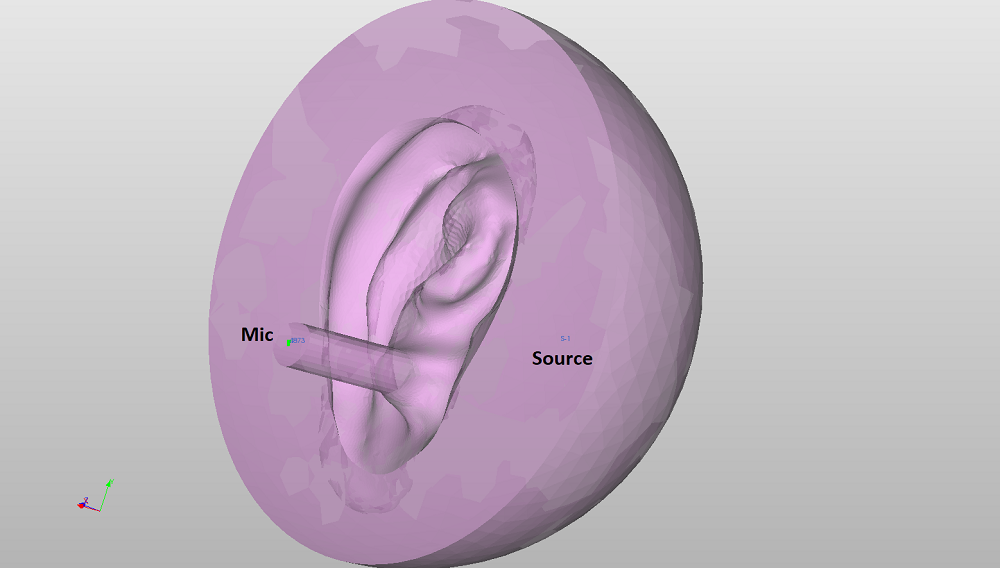
The frequency response from this model is shown below:
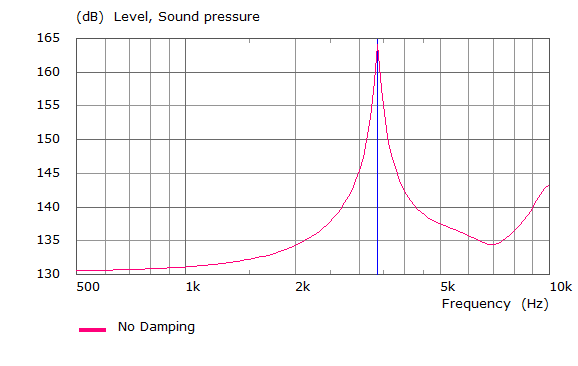
According to [1], measured values of gain due to ear canal resonance are ~10 - 12dB, so clearly the model requires some loss mechanism to produce more true-to-life results.
The image below shows that a surface absorbency condition is appled to the surface of the eardrum.
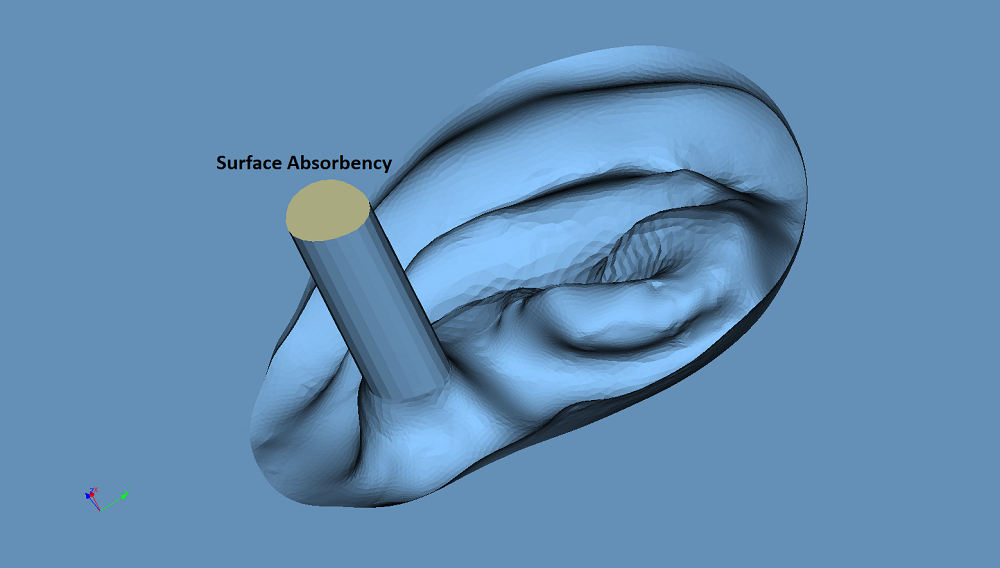
For various admittance values (denominator scaled as factors of RhoC), the magnitude of the ear canal resonance could be controlled. In reality, this is a short duct of flesh and cartilage and it is expected that this loss will be a complex valued impedance, however this approach was thought to serve as a reasonable starting point until mechanical aspects of the headphone model are considered.
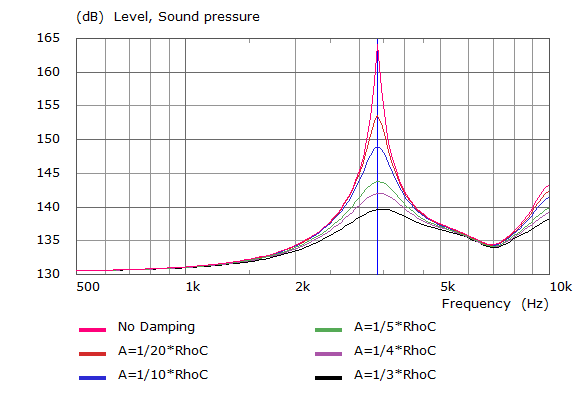
The graph above shows the variation in the ear canal resonance as a result of changing the eardrum impedance. The curve corresponding to an admittance of 1/(4*RhoC) seemed to be a good approximation.
The animations of the pressure phase contours illustrate the features of the ear responsible for the peaks at 3.3 and 10kHz.
3.36kHz
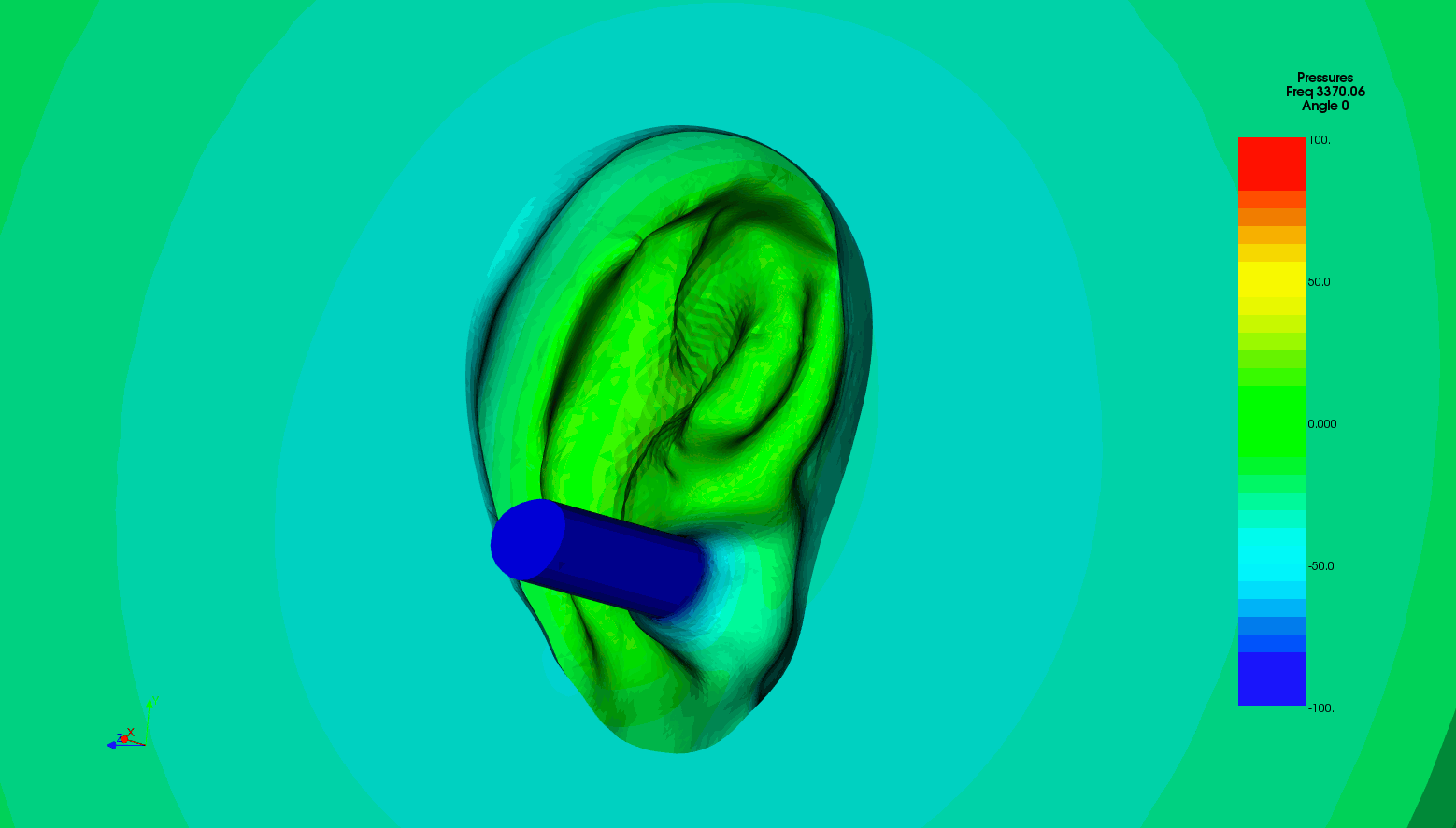
10kHz
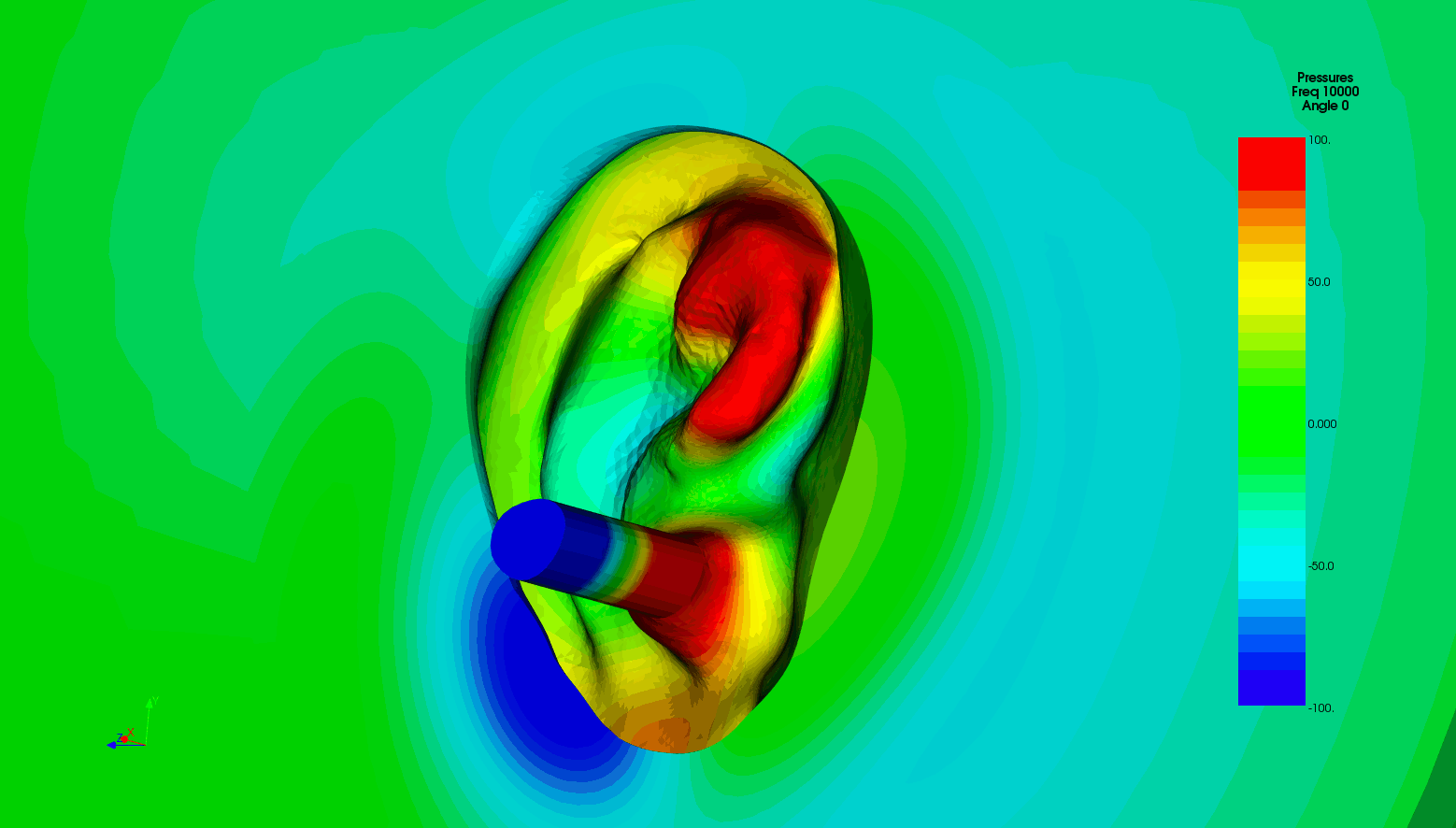
Reference:
[1] https://www.innerfidelity.com/content/headphone-measurements-explained-frequency-response-part-one


